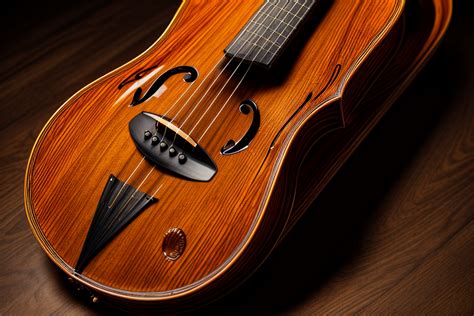In the vast and ever-evolving world of music, the search for unique and captivating sounds has led to the creation of countless instruments. Some, however, have remained elusive, hidden away in the annals of musical history or obscured by the dominance of more popular counterparts. These instruments possess a rare beauty and intrigue, offering a glimpse into the limitless possibilities of musical expression.

The Cristal Baschet
Crafted from glass rods of varying lengths and struck with metal mallets, the Cristal Baschet produces ethereal and haunting melodies. Its delicate tones evoke a sense of otherworldly enchantment, earning it a place among the most unique instruments in existence.
The Theremin
An electronic instrument that responds to the movement of the performer’s hands, the theremin has captivated audiences with its eerie and ethereal sound. Its unconventional playing technique, which involves waving one’s hands in the vicinity of two antennas, adds a mesmerizing element to any musical performance.
The Hydraulophone
A water-powered instrument that predates the pipe organ, the hydraulophone generates sound by directing water under pressure through multiple tubes. Its unique construction and haunting tones have made it a favorite of experimental composers.
The Otamatone
Resembling a mischievous sea creature, the otamatone is a Japanese electronic instrument played by squeezing its body and sliding its mouth. Its quirky and expressive sounds have captured the hearts of musicians and listeners alike.
The Charango
Originating from Bolivia, the charango is a small guitar-like instrument crafted from the shell of an armadillo. Its warm and resonant tones have made it an integral part of Andean folk music.
The Cimbalom
A Hungarian string instrument with hammered strings, the cimbalom is known for its vibrant and percussive sound. Its complex playing technique requires years of practice, making it a rare and highly specialized instrument.
The Dulcimer
A stringed instrument with a trapezoidal shape, the dulcimer produces a sweet and ethereal sound when its strings are struck with small hammers. Its origins can be traced back to the Middle Ages, and it remains a popular instrument for traditional folk music.
The Hurdy-Gurdy
A string instrument that plays continuously with the help of a rotating rosined wheel, the hurdy-gurdy has captivated audiences for centuries. Its haunting and medieval-inspired sound has made it a favorite of folk and experimental musicians.
The Ondes Martenot
An electronic instrument that produces otherworldly sounds through a keyboard and ribbon controller, the ondes Martenot was invented in the 1920s. Its ethereal and evocative tones have been used in countless film scores and experimental compositions.
The Sitar
A stringed instrument of Indian origin, the sitar is renowned for its intricate and mesmerizing sound. Its many sympathetic strings create a unique and haunting resonance, inspiring countless musicians around the globe.
The Relevance of Rare Instruments
While rare instruments may not be as common as their more popular counterparts, they play a vital role in the musical landscape. Their unique sounds and unconventional playing techniques foster creativity, expand musical horizons, and enrich the cultural tapestry.
Musicians who embrace these instruments demonstrate a deep commitment to musical exploration and a desire to break free from the confines of traditional instrumentation. They recognize the potential for these instruments to enhance musical experiences and connect with audiences on a deeper level.
Strategies for Acquiring Rare Instruments
Acquiring rare instruments can be a challenging endeavor. However, with determination and resourcefulness, it is possible to find these elusive treasures. Here are some effective strategies:
• Attend instrument exhibitions and auctions: Rare instruments are often showcased at specialized exhibitions and auctions, providing opportunities for musicians to acquire them directly.
• Explore online marketplaces: Online marketplaces can be a goldmine for rare instruments, offering a wider selection and often lower prices than traditional music stores.
• Network with musicians: Musicians who specialize in rare instruments can be an invaluable source of information and connections. Attend workshops, concerts, and festivals to connect with these individuals.
• Contact instrument makers: Makers of rare instruments are often passionate individuals who can provide insights into the instruments they craft. Contact them directly to inquire about availability and custom orders.
Common Mistakes to Avoid
When seeking out rare instruments, avoid these common pitfalls:
• Impulsive purchases: Thoroughly research the instrument before making a purchase. Consider its sound, playing technique, maintenance requirements, and availability of accessories.
• Neglecting maintenance: Rare instruments require proper care and maintenance to ensure longevity. Follow the manufacturer’s instructions carefully to preserve their condition.
• Lack of practice: Mastering rare instruments requires dedication and practice. Set aside ample time to develop your skills and fully utilize the instrument’s potential.
Conclusion
The pursuit of rare instruments is a journey of discovery, creativity, and musical enrichment. These instruments offer a gateway into the boundless realm of sound, expanding our musical horizons and inspiring countless musical masterpieces. By embracing these elusive treasures, musicians unlock a world of possibilities and forge a unique connection with the art of music.
